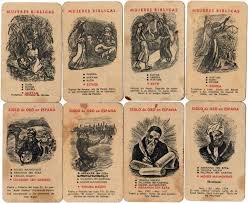Jewish Piedmont Cultural Card: Exploring a Rich Tapestry of Heritage and Memory
Jewish Piedmont Cultural Card: Exploring a Rich Tapestry of Heritage and Memory

Exploring a Rich Tapestry of Heritage and Memory
The Jewish Piedmont Cultural Card opens doors to a heritage often hidden in plain sight—synagogues, historic Jewish quarters, and cultural sites scattered across the Piedmont region of northwestern Italy. From castrate Baroque facades to rustic cemeteries, this cultural pass offers travelers and locals alike a meaningful way into the stories of Jewish communities who have lived, worshipped, and contributed here for centuries.
Origins and Purpose of the Jewish Piedmont Cultural Card
Piedmont has been home to Jewish populations since at least the late Middle Ages, with communities forming in towns like Casale Monferrato, Biella, Cherasco, Asti, and Vercelli. Visit Jewish Italy+4Visit Piemonte+4JGuide Europe+4 Over time, many of the physical markers of Jewish life—synagogues, ritual objects, cemeteries, manuscripts—have required restoration and protection.
The Jewish Piedmont Cultural Card was conceived as a way to foster access to these sites, support their maintenance, and raise awareness among visitors and locals. It’s not just about visiting; it’s about acknowledging, preserving, and learning from the Jewish legacy that helped shape Piedmont’s cultural landscape.
What the Jewish Piedmont Cultural Card Offers
Here are the main benefits and features that make the Jewish Piedmont Cultural Card both useful and meaningful:
-
Inclusive Access to Heritage Sites: The card covers entry to many synagogues (some active, some preserved), Jewish museums, and exhibitions in towns across Piedmont. Wikipedia+3JGuide Europe+3Visit Piemonte+3
-
Discounts and Special Rates: In many cases, cardholders pay reduced or no entry fees at the participating sites. Some may also access guided tours or audio guides for less.
-
Cultural Events and Education: Beyond buildings and artifacts, the card may unlock lectures on Jewish history, exhibitions of Jewish ritual art, visits to cemeteries, and workshops about local Jewish traditions.
-
Support for Conservation: Revenue from the card contributes to preserving old synagogues (like those in Biella or Casale Monferrato), restoring artwork, maintaining Jewish quarters, and keeping cemeteries intact. Wikipedia+2Visit Piemonte+2
Notable Sites and Heritage Highlights in Piedmont
If you hold the Jewish Piedmont Cultural Card, several must-see sites help tell the Jewish history in vivid detail:
Casale Monferrato Synagogue & Museum
Constructed in 1595, this synagogue is one of the oldest in Piedmont. Its façade is modest, but inside lies a richly decorated Baroque-Mannerist sanctuary: gilded woodwork, elaborate ceiling frescoes, and ornate Torah arks. The women’s gallery now houses a Jewish museum. Wikipedia+2JGuide Europe+2
Biella Synagogue
Situated in Biella’s historical Jewish quarter, this modest but architecturally significant synagogue dates to the 18th century. It features Baroque decoration, a Torah ark, and holds one of the oldest Torah scrolls in use. Restoration efforts in recent years have revived its interiors and preserved key features. Wikipedia
Synagogue of Turin
Turin’s great synagogue, built in the 19th century in the Moorish Revival style, is a central landmark. The Jewish community here is active, and the synagogue is accompanied by a museum, library, and collections of sacred objects. Visit Piemonte+2JGuide Europe+2
Smaller Gems: Cherasco, Saluzzo & Cuneo
-
Cherasco: has a small synagogue preserved from the 18th century with a women’s gallery and artifacts. Wikipedia+1
-
Saluzzo: featuring a synagogue in a ghetto-era building, frescoed ceilings, and often lesser visited but deeply evocative. Visit Jewish Italy+1
-
Cuneo: historic Jewish quarter, synagogues from the seventeenth century modified later, visible architectural traces of community life. JGuide Europe
How to Use the Jewish Piedmont Cultural Card Efficiently
To make the most of what this cultural card offers, here are some practical tips:
-
Check Participating Sites & Schedules Ahead
Not all sites are open daily; some have restricted hours for religious observance or restoration work. Confirm in advance which synagogues or museums are available. -
Choose the Right Duration
If the card offers options (one-day, multiple days, or season tickets), pick based on your stay. Longer passes may give better value if you plan to visit several small towns as well as Turin. -
Book Guided Tours Where Possible
Many synagogues and museums offer guided tours; these can greatly enrich the visit by explaining the architecture, rituals, and history which might not be obvious from just looking. -
Respect Cultural Sensitivities
When visiting religious sites, dress appropriately (modest clothing), abide by photography rules, and follow any instructions for behavior inside synagogues or cemeteries. -
Combine with Broader Piedmont Itineraries
The Jewish sites are often in towns that have other attractions — vineyards, historic architecture, natural scenery. Use the card as part of a wider travel plan to maximize your time.
Why the Jewish Piedmont Cultural Card Is Important Today
-
Preservation of Minority Heritage: The card shines light on Jewish history which sometimes has been overlooked or marginalized. Preserving synagogues, artifacts, ritual objects, and Jewish cemeteries helps prevent loss of tangible culture.
-
Cultural Education and Dialogue: For locals and visitors, engaging with Jewish heritage in Piedmont fosters understanding of Italy’s diverse past — how Jewish communities lived, how laws changed (for example emancipation in 1848 under Charles Albert), how art and architecture reflect identity. Visit Piemonte+1
-
Tourism and Economic Support: These cultural sites attract visitors, which benefits local businesses (cafés, guides, artisans). The card helps channel tourism into smaller towns, not just big cities.
-
Living Memory and Identity: Jewish heritage in Piedmont isn’t completely static; some communities are still active, and artifacts are still in use. The card helps support that continuity and visibility.
Challenges & Future Prospects
There are a few challenges to be aware of:
-
Conservation Costs: Many synagogues and historical artifacts are in fragile condition. Restoring frescoes, maintaining tombstones in cemeteries, and preserving old manuscripts require funding.
-
Accessibility & Information Barriers: Smaller sites sometimes lack multilingual guides or clear signage. Improving interpretive materials in English, Hebrew, etc., will help more visitors.
-
Awareness & Promotion: Many travelers are unaware of Jewish heritage in Piedmont. More promotion and integrated marketing (with broader “heritage tourism” routes) could increase usage of the card.
-
Balancing Protection with Access: Allowing visitors while protecting sacred sites requires regulations and respect, including limiting numbers of visitors, ensuring respectful behavior, etc.
Looking ahead, expanding the network of sites, increasing educational programming (especially for schools), and using technology (augmented reality tours, virtual exhibitions) are possible paths forward.
Summary
The Jewish Piedmont Cultural Card is more than a tourist pass — it’s a bridge between past and present. It offers access to synagogues, museums, cemeteries, and cultural narratives that tell the story of Jewish life in Piedmont from the Middle Ages to today. It supports preservation, promotes learning, and enriches travel in a way few conventional passes do.
Whether you are a traveler eager to dive deep into heritage, a Jewish person seeking hidden connections, or someone curious about art, architecture, and resilience, this card provides both access and meaning.





